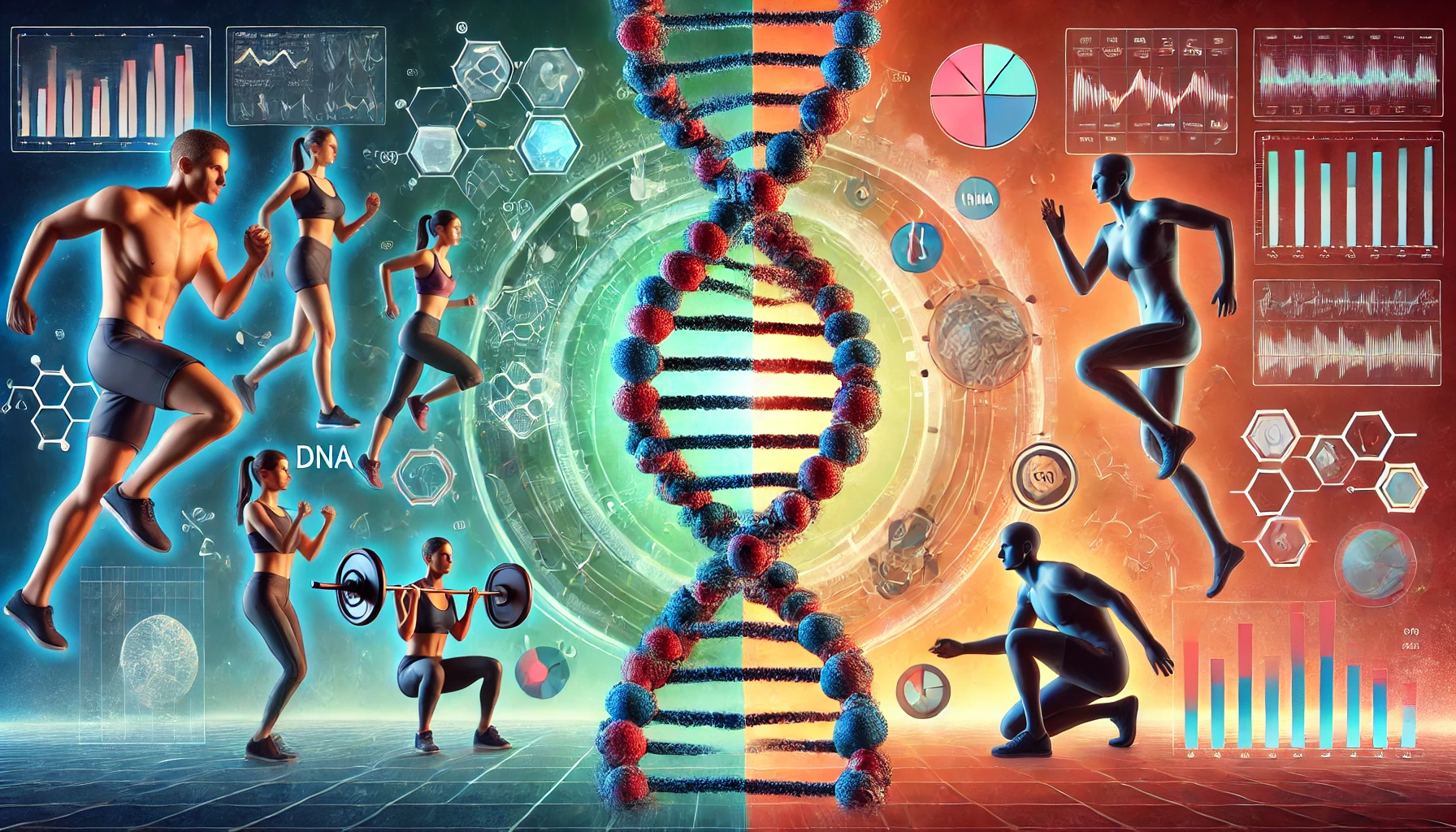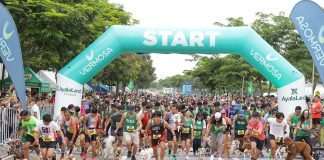Last Updated on February 1, 2025
Fitness is a universal goal for many people, whether it’s to lose weight, build muscle, improve endurance, or simply lead a healthier lifestyle. However, not everyone achieves the same results, even when following identical workout routines or diets. While factors like consistency, nutrition, and environment play significant roles, one often overlooked aspect is genetics. Our DNA plays a crucial role in determining how our bodies respond to exercise, recover from workouts, and even how we store fat or build muscle. In this blog, we’ll explore the fascinating connection between genetics and fitness, and how understanding your DNA can help you optimize your workout results.
The Science of Genetics and Fitness
Genetics is the study of genes, heredity, and genetic variation in living organisms. Every human has approximately 20,000-25,000 genes, which are segments of DNA that carry instructions for the development, functioning, and maintenance of our bodies. These genes influence everything from our eye color to our susceptibility to certain diseases—and yes, even our fitness potential.
When it comes to fitness, genetics can influence:
- Muscle Composition: The ratio of fast-twitch to slow-twitch muscle fibers.
- Metabolism: How efficiently your body burns calories and processes nutrients.
- Recovery: How quickly your body repairs itself after exercise.
- Body Composition: Where you store fat and how easily you gain or lose weight.
- Endurance and Strength: Your natural aptitude for activities like running, weightlifting, or sprinting.
Understanding these genetic factors can help you tailor your fitness routine to align with your body’s natural tendencies, maximizing your results and minimizing frustration.
Muscle Fiber Types: Fast-Twitch vs. Slow-Twitch
One of the most significant ways genetics influences fitness is through muscle fiber composition. There are two primary types of muscle fibers: fast-twitch and slow-twitch.
- Slow-Twitch Fibers (Type I): These fibers are more efficient at using oxygen to generate energy over long periods. They are fatigue-resistant and ideal for endurance activities like long-distance running, cycling, or swimming. If your DNA predisposes you to having a higher percentage of slow-twitch fibers, you may excel in endurance sports.
- Fast-Twitch Fibers (Type II): These fibers generate quick, powerful bursts of energy but fatigue more quickly. They are better suited for activities requiring strength, speed, and power, such as sprinting, weightlifting, or jumping. If your genetics favor fast-twitch fibers, you may find it easier to build muscle and excel in explosive movements.
While everyone has a mix of both fiber types, the ratio is largely determined by genetics. This doesn’t mean you can’t improve in areas where you’re genetically less predisposed, but it does mean you may need to work harder or adjust your training approach.
Metabolism and Weight Management
Your metabolism—the process by which your body converts food into energy—is another area heavily influenced by genetics. Some people seem to eat whatever they want without gaining weight, while others struggle to lose weight despite strict diets and exercise. This discrepancy often comes down to genetic factors, such as:
- Basal Metabolic Rate (BMR): The number of calories your body burns at rest. Some people naturally have a higher BMR, meaning they burn more calories even when inactive.
- Fat Storage: Genetics can influence where your body stores fat (e.g., hips, abdomen, thighs) and how easily you gain or lose fat.
- Appetite Regulation: Genes like FTO (the “fat mass and obesity-associated” gene) can affect hunger hormones, making some people more prone to overeating.
While you can’t change your genes, understanding your metabolic tendencies can help you make smarter choices about diet and exercise. For example, if you have a slower metabolism, you might focus on strength training to build muscle, which can increase your BMR over time.
Recovery and Injury Risk
How quickly you recover from workouts—and your risk of injury—is also influenced by genetics. For example:
- Collagen Production: Collagen is a protein that helps repair tissues, including muscles, tendons, and ligaments. Variations in genes like COL1A1 and COL5A1 can affect collagen production, influencing how quickly you recover from workouts and your susceptibility to injuries like tendonitis.
- Inflammation Response: Genes like IL6 and TNF-alpha play a role in inflammation, which is a natural part of the recovery process. Some people have a more robust inflammatory response, allowing them to recover faster, while others may experience prolonged soreness or stiffness.
- Lactate Clearance: During intense exercise, your body produces lactate, which can cause muscle fatigue. Genes like MCT1 influence how efficiently your body clears lactate, affecting your endurance and recovery.
If you’re genetically predisposed to slower recovery, you might need to prioritize rest days, incorporate active recovery techniques (like yoga or stretching), or adjust the intensity of your workouts.
Endurance vs. Strength: Genetic Predispositions
Have you ever wondered why some people seem to excel at endurance sports like marathons, while others dominate in strength-based activities like powerlifting? The answer often lies in their DNA.
- Endurance: Genes like ACTN3 and ACE influence aerobic capacity and endurance. For example, the ACTN3 gene produces a protein found in fast-twitch muscle fibers. A variation of this gene (known as the “R577X” polymorphism) is associated with better endurance performance. Similarly, the ACE gene affects blood flow and oxygen delivery, which are critical for endurance activities.
- Strength: On the other hand, genes like MSTN (which regulates muscle growth) and IGF-1 (which promotes muscle repair) are linked to strength and power. Variations in these genes can make it easier for some people to build muscle and excel in activities requiring short bursts of energy.
Understanding your genetic predispositions can help you choose the right type of exercise for your body. For example, if you have a genetic advantage in endurance, you might focus on running, cycling, or triathlons. If you’re genetically inclined toward strength, weightlifting or HIIT (high-intensity interval training) might be more effective.
The Role of Epigenetics: Can You Change Your Genetic Destiny?
While genetics plays a significant role in fitness, it’s not the only factor. Epigenetics—the study of how environmental factors influence gene expression—shows that your lifestyle choices can “turn on” or “turn off” certain genes. For example:
- Exercise: Regular physical activity can activate genes that promote muscle growth, fat burning, and cardiovascular health.
- Diet: Nutrient-rich foods can influence genes related to metabolism and inflammation.
- Sleep: Poor sleep can negatively affect genes involved in recovery and stress response.
This means that even if you’re not genetically predisposed to be a marathon runner or a bodybuilder, you can still improve your fitness by making smart lifestyle choices.
How to Use Genetic Testing for Fitness
Advancements in genetic testing have made it possible to gain insights into your unique genetic makeup. Companies like 23andMe, AncestryDNA, and specialized fitness-focused services like DNAfit or FitnessGenes offer tests that analyze genes related to fitness, nutrition, and health. These tests can provide information on:
- Your muscle fiber composition
- Your metabolic rate
- Your risk of injury
- Your optimal diet and exercise plan
While genetic testing can be a valuable tool, it’s important to remember that it’s just one piece of the puzzle. Your environment, lifestyle, and mindset also play critical roles in achieving your fitness goals.
Practical Tips for Working with Your Genetics
- Play to Your Strengths: If you’re genetically inclined toward endurance, focus on activities like running, swimming, or cycling. If you’re more suited to strength, prioritize weightlifting or HIIT.
- Be Patient with Your Weaknesses: If you’re not naturally gifted in a certain area, don’t give up. With consistent effort, you can still make progress.
- Prioritize Recovery: If you’re genetically prone to slower recovery, make sure to incorporate rest days, stretching, and proper nutrition into your routine.
- Optimize Your Diet: Use genetic insights to tailor your diet to your metabolism and nutrient needs.
- Stay Consistent: Genetics may influence your potential, but consistency and effort are what ultimately determine your success.
Conclusion
Genetics undeniably plays a significant role in fitness, influencing everything from muscle composition to metabolism to recovery. However, it’s important to remember that your genes are not your destiny. By understanding your genetic predispositions and making informed choices about your diet, exercise, and lifestyle, you can optimize your fitness journey and achieve your goals.
Whether you’re a seasoned athlete or just starting out, embracing the role of genetics in fitness can help you work smarter, not harder. So, the next time you hit the gym or lace up your running shoes, remember: your DNA may set the stage, but you’re the one who gets to write the script.








